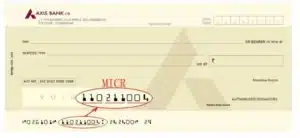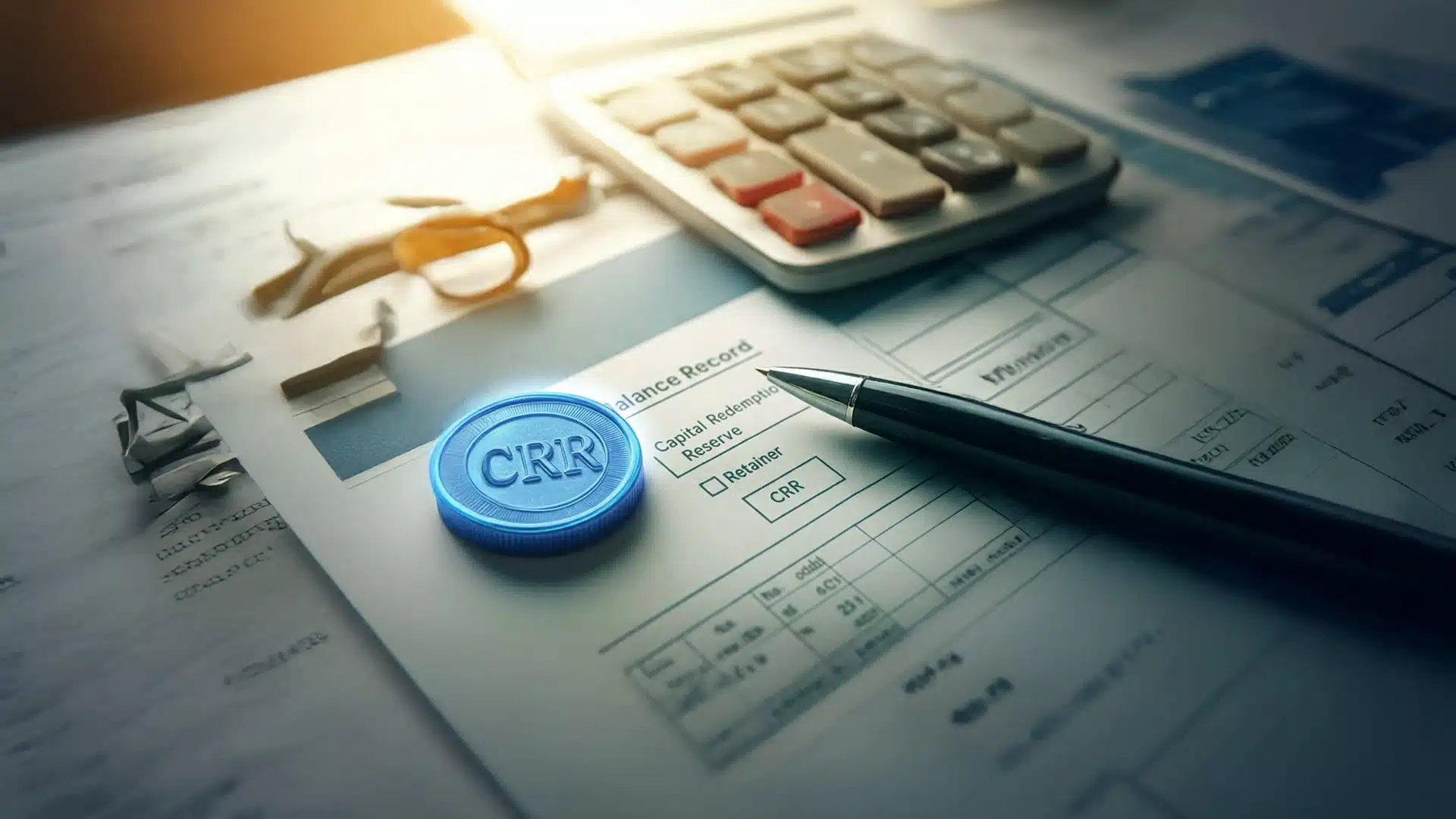Introduction
In the world of banking, accuracy and speed are essential for processing cheques, and MICR technology ensures both. Magnetic Ink Character Recognition is a system that enables banks to read and process cheques at very high speed, securely, and with very few errors.
At the bottom of the cheque, you will notice a 9-digit number — this is the MICR Code. The number is essential to ensure the smooth routing of a cheque to the relevant branch. In this blog, we will explain what MICR is, what it is used for in banking, the meaning behind MICR codes, how one finds one’s own MICR number, the security features of MICR, and why MICR has become a vital element in contemporary banking.
MICR Full Form in Banking
The MICR full form in banking is Magnetic Ink Character Recognition; it is among those technologies that secure financial transactions. People often ask, “What does MICR stand for in banking?” The simplest answer is that it is an instrument used to expedite the processing of cheques while minimizing errors. The MICR code listed on the bottom of a cheque enables banks to identify the city, bank, and branch involved in the transaction. It involves the electronic processing of cheques through magnetic ink and character recognition, thus maintaining high accuracy and very low chances of fraud or misreading. Therefore, the MICR number on cheques carries utmost significance in the routine operations of banking.
What Is a MICR Code in Banking?
A MICR code in banking is a unique 9-digit number assigned to each branch for the speedy and correct clearing of cheques and other banking operations. MICR stands for Magnetic Ink Character Recognition, which is the technology banks use to read and verify information printed on cheques with magnetic ink using special instruments. The code gets divided into three parts. First 3 digits denote the city, next 3 digits denote the bank, and last 3 digits denote the branch. So, a MICR code is like the fingerprint for every branch and hence is the guarantee that a particular cheque gets routed to the appropriate destination without any ambiguity or delay. Without an MICR code, banks would rely on slower and error-prone manual routing mechanisms for cheques, thereby making the clearance process a much longer affair. Currently, that has been made possible through the electronic routing of cheques faster and safer than ever before, in this way, minimizing the chances of fraud or human errors.
MICR Number on Cheque Explained
The MICR number on a cheque is one of the most important details printed on every cheque to ensure that the cheque is processed quickly and accurately. If you take out a cheque from your cheque book and have a look at the bottom, you will find three distinct sets of numbers, printed in a special font. The first set of numbers is the cheque number, and the second set is the MICR number on the cheque, while the last set is the IFSC code. The MICR number on the cheque is basically a series of 9 digits identifying the precise branch from which a cheque was issued. This number is printed in magnetic ink, allowing machines to read it accurately. It helps banks speed up cheque clearances, reduce errors, and avoid fraudulent transactions. For its customers, this means safe and fast money transfers. Wherever the cheque MICR number is located, it is the same for all banks of India, which makes it easier for the customer and institution to find and verify it. Without this number, routing cheques would take a very long time, be very confusing, and very error-prone.

How Many Digits Does MICR Have?
A common question many people have is, “How many digits does MICR have?” The answer is that the MICR code of a bank will always have 9 digits. Each digit denotes some specific function, which gives a meaning to or, rather, structure to the code; they are not random numbers. The first three digits of the MICR number denote the city in which the bank branch is situated, and these digits usually correspond to the postal PIN code of the area. The next three digits denote the bank itself, i.e., which bank has issued the cheque. The last three digits of this code denote the precise branch of the bank so that the cheque is routed correctly to its origin. It is due to this classification that cheques are processed by banking systems in a fast and precise way. MICR numbers are quite useful in avoiding errors and confusion in financial transactions, etc. For instance, in the case of cheque deposits, banks accept a nine-digit MICR code, which identifies the city, bank, and branch name details instantaneously, thus expediting clearance and avoiding misrouting. Hence, MICR numbers are not just random digits — they follow a structured format that lets cheque processing remain quick and efficient.
What is the MICR Code in the Cheque Book?
If you are wondering, “What is MICR code in a cheque book?”It is the unique MICR number at the bottom of every cheque. The premise of this number is that it is written in a special magnetic ink so that machines can easily read it. This nine-digit code acts as a key instrument within cheque clearing activities, allowing cheques to be cleared quickly, accurately, and securely. This is not just any other combination of numbers; rather, this combination is derived from Magnetic Ink Character Recognition (MICR) technology, which enables very high-speed scanning of cheques, lessening human error and reducing the probability of fraud. The moment you would like to pay or deposit a cheque, the code allows the banking system to identify the city, the bank, and the particular branch wherefrom the cheque has been issued so that it is routed for clearance there; so without this code, banks would have resorted to manual verification of the details, a process that would be not only time-consuming but in fact also error-prone! Making this step automatic helps in speeding up banking transactions with the MICR code on the issue of a cheque-book and ensures more security against forgery. Put simply, this number is an unsung hero that makes clean and error-free cheque processing possible in the world of banking nowadays.
Define MICR and Its Uses
For the banking industry, it is paramount that transactions are secure, free from error, and processed quickly through modern technology. One such technology is MICR, or Magnetic Ink Character Recognition. To simply define MICR, it is a technology in banking that uses special magnetic ink and characters for verifying, identifying, and processing cheques. Unlike normal printing, the magnetic ink helps the banks to scan and identify important data such as bank code, branch code, and so on, almost instantaneously. This saves a lot of time and adds a layer of protection to cheque-based transactions. Because of the reliability and accuracy of the MICR bank system, it has become a worldwide standard.
Some important uses of the MICR technology make it necessary for operations in banking.
Faster Cheque Clearance
The main use of MICR is to provide faster clearance of cheques. Earlier, cheques had to be manually verified, and this caused a delay in many transactions. With the MICR, the code printed at the bottom of the cheque allows a machine to instantly recognize the bank and branch details. This ensures that cheques are routed correctly and cleared in much less time, saving both customers and banks valuable effort.
Prevention of Fraud
Another critical use of MICR is in fraud prevention. The magnetic ink, used to print the MICR number on the cheque, is quite difficult to forge or alter. Hence, the cheques in magnetic ink print are harder to manipulate in comparison with cheques printed in normal ink. The reliance on machines for reading the MICR codes to authenticate cheques greatly lessens the probability of tampering, which protects the customer and the financial institutions from losses.
Reducing Human Errors
In doing manual cheque verification, human errors do exist: one could misread the branch codes or insert the wrong information. MICR makes sure that the system will not allow this. MICR systems allow machines to programmatically and correctly read the MICR code of the bank every time.
Easy Identification of Banks and Branches
Every MICR number is constructed in a very defined manner. It is 9 digits, out of which the first 3-digit code stands for the city, the second 3-digit code stands for the bank, and the last 3-digit code stands for the branch. This allows the identification of the issuing bank and branch of the cheque to be extremely straightforward.
Because of these benefits, MICR has become a global standard in banking.
How to Find the MICR Code of Your Bank?
For many customers, one of the most common questions is: “How to find the MICR code?” Fortunately, it is easy, and there are many options for you to check it at your convenience. Whether you are filling out a form, carrying out a financial transaction, or just checking details, here are trusted ways to find the MICR code of your bank.
Check the MICR Number on the Cheque
One of the easiest ways to find the MICR code is by checking your cheque. At the bottom of every cheque, there are three sets of numbers: the first set is the cheque number, the second is the MICR number on the cheque, and the third is the IFSC code. As it is printed in magnetic ink, it can be read easily by banking machines.
Check Out Your Cheque Book
Besides the cheque itself, some banks print the MICR code in the Cheque Book details in a couple of places that could appear on either the first page or the inside cover. This can be helpful for customers who require the code while filling out a form and are unwilling to tear a check.
Visit Your Bank’s Official Website
Almost every bank lists the MICR codes of its branches on its official website. Hence, you can visit your bank’s website and go to the branch locator or customer service section to find the MICR code for your branch. This is useful if you don’t have your cheque book nearby.
Log In to Your Net Banking App or Passbook
The other way to get the MICR code is by logging into your net banking account. Many banks display the branch’s MICR code on the account details page. If you look at your passbook, most probably it will appear there with the branch and account details. So, you can keep the code handy for future reference.
Security Characteristics of MICR
Actually, MICR—standing for Magnetic Ink Character Recognition—has been designed to make cheque processing faster while also providing security measures to prevent fraud. Several features lend this system great reliability among banks.
Use of Magnetic Ink
The magnetic ink stands as the paramount security feature for MICR. The ink contains iron oxide particles, enabling machines to detect and read characters. This makes alterations or forgery nearly impossible on the MICR codes printed on a cheque, since during automated scanning, any tampering in the printed numbers might be detected.
Special MICR Font
These MICR characters are printed in a font type known as E-13B in some countries or CMC-7 in others. This font type is standardized and accepted by banking machines for perfect reading, unlike the handwritten font. Giving unique shapes to these characters lowers the chance of making mistakes and helps in distinguishing genuine MICR codes from counterfeit ones.
Structured 9-Digit Code
The MICR code is divided into three parts: city, bank, and branch. This logical division adds one more layer of check. The system performs a cross-reference check of these numbers with the issuing branch as part of the cheque clearing process, which makes it exceedingly difficult to forge or misroute.
Automated Verification
MICR scanning machines are used by banks to verify cheques automatically. Magnetic ink combined with special fonts and machine readability ensures that any discrepancy or attempt at tampering is instantly detected. So, this minimizes human errors and strengthens security.
Fraud Prevention
With these features of security plus, MICR prevents such common banking frauds as reiteration, alterations, or forgery of cheques. In addition, it securely routes the funds to the intended recipient.
Conclusion
The MICR code is not just a number but a key security feature for safe and efficient cheque transactions. The special 9-digit number that MICR codes use uniquely,case-wise, helps banks to identify the city, bank, assigned branch, and the error-free and smooth clearance of cheques. By now, you should be aware of what MICR is and the full form of MICR in banking, its use in cheque books, and how to find the MICR number easily. EnKash primarily focuses on demystifying complex financial concepts, and knowing about MICR will empower you to transact banking affairs with far more awareness, confidence, and efficiency in everyday dealings.








